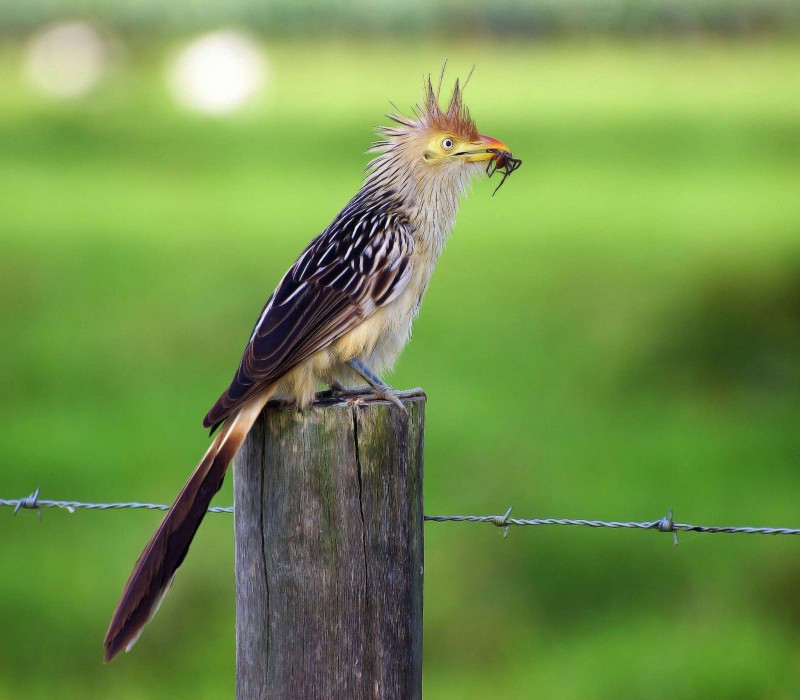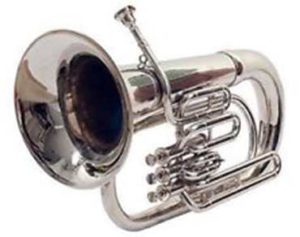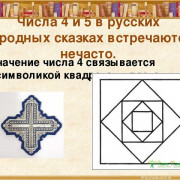Африканский музыкальный инструмент калимба
Содержание:
- This minor retuning can breathe new life and emotion into your Alto Kalimba
- Get Free Tablature for 17-Note Kalimba in C
- This is the download you’ve been waiting for
- Sharing some of the sweet statements we got from folks in 2016
- An exotic tuning on this otherwise vanilla kalimba makes for new and interestng music
- Syncopation, variations, tweaks and trills
- Free Tablature for «Silent Night» for the Treble Kalimba
- Christmas Music on Kalimba is so beautiful, and we have books to help you play music like this
- Free Tablature for Tinashe’s Song «Zambezi»
- Stylizing this archetypical mbira music makes it simple to play on Alto Kalimba
- Free Tablature for Alto, Treble, and Chromatic Kalimbas — and learn about the Secondary Dominant
- Get Free Tablature, Learn from the Video
- All your holiday favorites, arranged for the Hugh Tracey Treble in G
- You have to run it in compatibility mode
- A Guide to Changing from G Major Tuning to Other Exotic Tunings
This minor retuning can breathe new life and emotion into your Alto Kalimba

The Hugh Tracey Alto in standard G major tuning has become the standard kalimba in many ways. For 12 years, it has been the best selling kalimba at Kalimba Magic. I have written more instructional books and downloads for this kalimba than for any other kalimba. I know more songs on my Alto than on any other kalimba. And the Alto kalimba was the blueprint for other models such as the Bb Treble and D Treble kalimbas.
But what if the world of G major sounds isn’t your world? What if you need something darker, moody, a bit mysterious, rather than that happy-go-lucky Alto kalimba with a smiley face on it?
You might be interested in the G minor tuning for the Alto kalimba — and you might be interested in this new instructional download for the G minor tuned Alto.
Get Free Tablature for 17-Note Kalimba in C
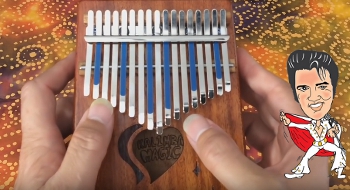
You may very well know that right now, the most popular kalimba video in the world is by Acoustic Trench, playing «I Can’t Help Falling in Love With You» (made most famous by Elvis Presley in 1961) on an alternatively-tuned 17-Note kalimba. Trench’s tuning made a bass scale, going from the center to the far left — and a treble scale, going from the center to the far right. He played melody on the right and accompaniment on the left.
Well now — let’s just say that right now you are sitting in the catbird seat, because you have choices. You can learn to play the song in this alternative tuning; or you could learn to play it in the generic tuning for the 17-note kalimba, where both thumbs are involved in playing the melody.
This is the download you’ve been waiting for
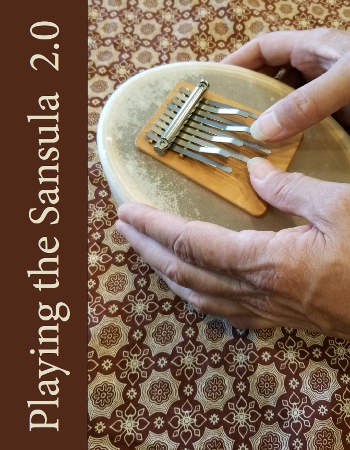
The sansula is a wonderful, mysterious contradiction.
Whatever you play on the sansula sounds great…and the sansula also has a limited capability.
This download goes below the sweet, fluffy outer layer of the sansula’s character and gives you the understandings needed to really work the instrument’s potential, resulting in a lot more joy and music! Included in the ebook: the essential chord progression and melodies of the sansula in standard tuning; play along with surprisingly diverse chord progressions; accompanying another instrument; and alternative tunings — all these give you and your sansula a much wider scope of possibilities.
This ebook is a total rewrite of the 2009 book «Playing the Sansula.» The download is a 53-page PDF containing live links to 49 MP3 sound files and to web pages that can help you to understand how to read tablature or how to tune your sansula.
Sharing some of the sweet statements we got from folks in 2016
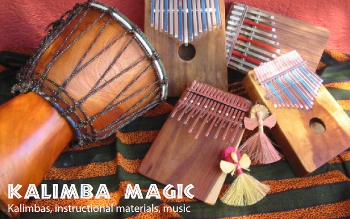
I don’t know exactly why I am doing this. There may be an element of ego in reprinting my customer’s (happy) comments to me. But there is another motive here: each of these statements has love and warmth and light in it, and it just seemed a shame to keep them all locked up. Each of these people, in some way or other, has seen me at or near my best. These comments help tell a part of the story that normally is never shared, and I feel it would be interesting for you to see them.
So, for what it’s worth, there are some nice quotes — such as (ahem)»You are truly a purveyor of magic and joy!» Oh, I do love being the wizard.
And, among the comments sent to Kalimba Magic, I also get some unhappy messages. It is good to hear about how I can improve what I do, and I appreciate feedback that helps me take better care of my customers.
An exotic tuning on this otherwise vanilla kalimba makes for new and interestng music
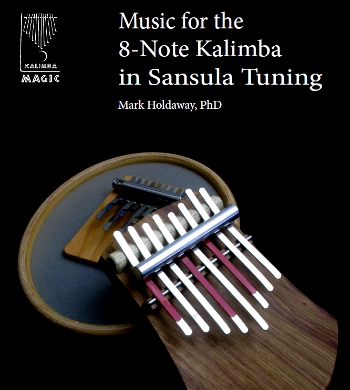
The 8-Note kalimba is a great instrument on which to learn, and is usually tuned to one octave of the C major scale. As such, it is a pretty modest kalimba, playing songs such as «London Bridge is Falling Down» and «Joy to the World» (and NOT the «Jeremiah was a bullfrog» version).
If you are willing to retune your 8-Note kalimba, you can greatly increase the amount of music accessible to the 8-Note kalimba. The standard A minor Sansula tuning is one of the least ordinary tunings you can put onto the 8-Note kalimba — if you do, you won’t be playing «Twinkle, Twinkle» anymore! AND if you don’t want to retune your kalimba, you can send your old 8-Note to the Kalimba Doctor and we will do the job for you, or you can order a new 8-Note in the Sansula tuning. (I am partial to the Goshen 8-Note kalimba.)
Syncopation, variations, tweaks and trills
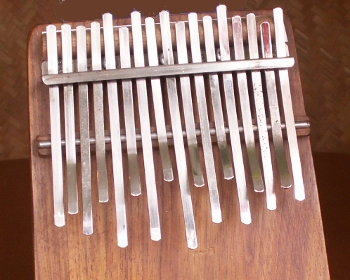
The Lotus-tuned karimba was created by the inventive recording artist SaReGaMa. He once received an out-of-tune African-tuned karimba as a gift. Rather than simply tuning it up, SaReGaMa instead used this as an opportunity to invent several of his own tunings and create music that worked with each tuning. The Lotus tuning is the one he used for a song that he improvised one night in an effort to get his baby daughter, Lotus, to go to sleep. He made a video of that improvisation, known to the world as «Kalimba Solo for Lotus.»
Available at the Kalimba Magic Shop, we have two instructional downloads and one book for the innovative Lotus karimba tuning. In this post we are giving away the tablature for Exercise 20, «Three Trills,» from the book Playing the Lotus Karimba. A trill on kalimba happens when you have two notes that are exactly the same on both the left and right sides of the kalimba, and you play them quickly, alternating between them. Listen to find out exactly what this sounds like!
Free Tablature for «Silent Night» for the Treble Kalimba
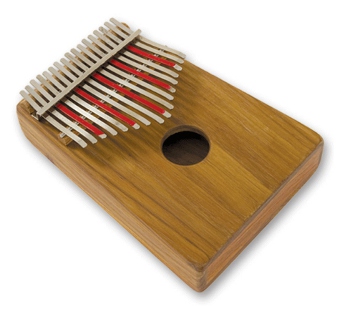
In my mind, most songs that you can play on the Treble kalimba are also possible to play on the Alto kalimba, and this offers great flexibility. But there are some songs that are written for Alto that require its low notes and are just not possible on the Treble which by nature is in a higher range. You could retune the Treble into a Bb Treble, and then it would behave just like an Alto with two extra notes.
But there is one (very famous) song that I don’t think can be done properly on either the Alto kalimba or the Bb Treble kalimba — it requires the high notes of the Treble kalimba in standard G tuning, and that song is «Silent Night.»
Christmas Music on Kalimba is so beautiful, and we have books to help you play music like this
The kalimba is a wonderful instrument for Christmas carols, with a peaceful and angelic sound. I have spent many joyous hours learning, practicing, and performing Christmas carols on the kalimba. More importantly, I have spent many diligent hours notating these songs for the Hugh Tracey Alto and Treble kalimbas so that you can also learn to play these carols.
Every year about this time, I get my Advanced Alto and Treble Christmas books out and brush up on my carols. And each year, I add one or two tunes to my repertoire. If you want to play Christmas carols this holiday season, now is the time to get an Alto or Treble kalimba, and/or a book (or pull out your old ones), and get practicing!
This post catalogs all of Kalimba Magic’s instructional resources for holiday music, including free tablature, along with the kalimbas that work best for Christmas carols.
Free Tablature for Tinashe’s Song «Zambezi»
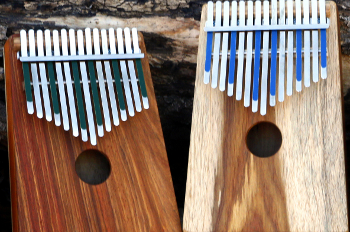
Several people have requested the tablature for Tinashe’s popular and touching song «Zambezi,» which has been around on YouTube for a while. It is a great song for the kalimba, as it is pretty much just a four-measure riff that is repeated through the song with minimal changes. It is not difficult and even novice players can learn to play this song in about 10 or 15 minutes.
«Zambezi» is performed by Tinashe on solo Alto kalimba and voice, and we also have a link to him performing it with a four-piece band. There is not much information available about him to be found on the Internet. But be aware that there is another Tinashe — a female African American artist, who is more famous than the Tinashe of «Zambezi» fame; she doesn’t play the kalimba — so try not to confuse the two.
Download the free tablature and learn this simple, pretty song!
Stylizing this archetypical mbira music makes it simple to play on Alto Kalimba

For the first 15 years I played kalimba, something about it confused me. Even though my Hugh Tracey Alto kalimba came in a box that said it was an African instrument, when I played the kalimba, the music that naturally came out was more like folk and rock and classical music. My kalimba played the music that I knew and loved and understood.
Americans get very little exposure to African music. For the last ten years, I have been slowly moving toward getting to know, and understanding, African music, with the goal of being able to (someday) play African music on my kalimba.
In this post, I show you step-by-step how to play a cool yet simple traditional African progression on the Alto kalimba.
Free Tablature for Alto, Treble, and Chromatic Kalimbas — and learn about the Secondary Dominant

I never really understood the big deal about «The Wizard of Oz» when I was growing up. We had a black and white TV, and I remember in high school, a friend asked me «Hey, you know how when Dorothy lands in Oz, everything is suddenly in color?» I answered «No…» and suddenly realized part of why I had never gotten the movie! The music from this movie did not become a favorite part of my life as it did for so many.
But when you are a performing musician, it is not always about what pleases you most. In music, you also are playing for the audience. And I can tell you, no song succeeds in touching listeners’ hearts quite like «Over the Rainbow» played on a tiny little music box (the kalimba).
Get Free Tablature, Learn from the Video

A Kalimba Magic customer recently expressed the desire to play the eternally popular «Love Me Tender» on their 17-Note Kalimba in C, and the result is this blog post and free tablature for everyone to learn it. The 17-Note C Kalimba tablature is also usable with a 15-Note ALTO kalimba, and if you have Alto kalimba tablature, you can use it for your 17-Note in C — just be aware that the note names will be shifted by a 4th.
What’s cool about this post is that we break the music down into three versions (on tablature AND on video!) — melody only, melody plus chords, and melody plus fully chromatic chords. This makes it so easy for you that it practically plays itself. Give it a look!
All your holiday favorites, arranged for the Hugh Tracey Treble in G

This collection of Christmas favorites has been arranged specifically for the Hugh Tracey Treble Kalimba in G. We started with a set of generic arrangements, but refined several of them so all the songs are comfortable and easy to play on the 17-Note Hugh Tracey Treble kalimba.
I have been playing Christmas Carols on the kalimba for 20 years. Not only is it a fine way to learn your kalimba, working on songs you already know. It is also a fantastic way to cultivate feelings of joy and gratitude during the lead-up to the holiday season. It is also a great way to share joy with other people in your life.
This 59-page PDF download with clickable links to MP3 files has tablature for 32 different versions of 28 different carols. This book has enough easy songs to have you playing carols right away, and it has enough complex songs to keep you learning and playing carols each holiday season for years!
You have to run it in compatibility mode

Do you ever wonder how I create kalimba tablature? Those detailed, elongated maps of the kalimba with note symbols dancing on the tines? I use the Windows program KTabS — the Kalimba Tablature Software. This program changed my life, my productivity, and how the rest of the world learns and creates new kalimba music too!
KTabS is an old program, and for the last few years, the KTabS website indicated the program would not run on the most current Windows operating systems.
But the big news today: I heard from the creators and owners of KTabS, Randy and Sharon Eaton, that KTabS DOES run on computers running Windows 10 — you just have to run it in compatibility mode. Click through to learn how to do that… or to learn why you should have KTabS.
A Guide to Changing from G Major Tuning to Other Exotic Tunings
Why would anyone retune their kalimba? Well, I hope you DO tune up your kalimba every few weeks or so, at least to maintain its correct original tuning. However, once you learn the skills required to brush up the kalimba’s tuning, you also possess the skills required to explore alternative tunings — you just need to push or pull the tines a bit farther than the very delicate moves required to fine-tune the kalimba.
But again, why would someone retune their kalimba to a different tuning? Because different musics are available to different tunings, and because different tunings help produce different emotional expression. If you ever start to get bored with your particular kalimba and what you can do with it, you should consider changing to another tuning to see what new music might speak to you.
This article walks you through four different possible retunings for the 11-note pentatonic kalimba. So, if fear or uncertainty were preventing you from taking the plunge and retuning your kalimba, you now have the tools and guidance to jump into the river and baptise yourself in the flow of ever-changing musical possibilities. Really — once you begin to explore new tunings, it’s a whole new world!



